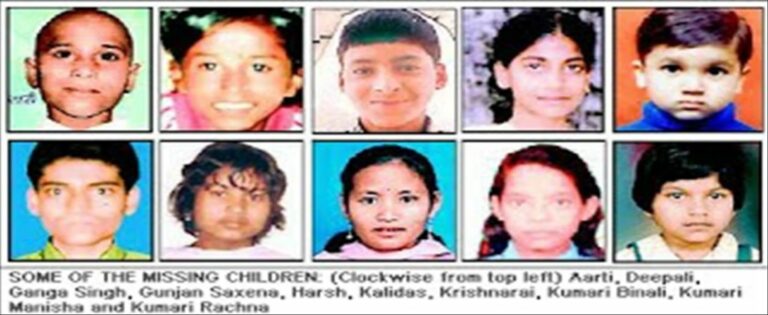Surinder Koli (Nithari Case) Age, Wife, Children, Family, Biography
Some Lesser Known Facts About Surinder Koli
- Surinder Koli grew up in a financially weak family in Mangrukhal in Almora, Uttarakhand.
- He dropped out of school (class 6) when he was 13 years old and began doing petty jobs to support his family.
- He also worked as a butcher and sometimes ate raw flesh.
- Surinder then moved to Delhi, where he took a job to wash utensils at a rundown hotel.
- From 1993 to 1998, Surinder worked as a cook at a retired brigadier’s house in Sector 29, Noida.
- In 1998, he went back to his village and got married. A month after his marriage, he again moved to Noida and began working at the house of a retired army major. He worked there for around six years.
- Later, he began working as a domestic help at Moninder Singh Pandher’s house near Nithari village in Noida, Uttar Pradesh.
- After his marriage, he had a son, who passed away when he was just 10 months old.
- In December 2006, Surinder Koli, along with businessman Mohinder Singh Pandher, was accused of gruesome murders and rapes of around 16 young girls.
- The matter came to the light when the body parts of two children, who were earlier reported to be missing, were found in a drain near Pandher’s house by two villagers, who informed the police about it.
- During the investigation of the case, Koli admitted to murdering six children and a young woman named Payal.
- There were clashes between the people of the Nithari village and the police as the villagers claimed that the police was trying to cover up the criminals.
- Later, an inquiry committee was established to look into the case, which was then transferred to the Central Bureau of Investigation (CBI).
- In 2009, the Directorate of Forensic Sciences (DFS) laboratory conducted brain mapping and narco-analysis tests on Koli and Pandher. During the tests, Koli revealed that his employer Pandher often called call girls to his house, which increased his desire.
- During the investigation, Surinder revealed that he often had an urge to murder people. He also revealed that he had dreams of a woman in a white dress that disturbed him mentally until he found a victim and murdered her.
- He further admitted to eating the flesh of two of his victims and the liver of a boy. He said that he was able to easily chop the bodies as he was an experienced butcher.
- The Central Bureau of Investigation charged Koli with 16 cases of abduction, rape, and destruction of evidence. As per CBI, Surinder reportedly had necrophilic tendencies. He also had cannibalistic tendencies.
- CBI ruled that although Moninder Singh Pandher had no direct involvement in the murders, he was found guilty of engaging in prostitution and destroying evidence. However, the CBI could not verify if Pandher was aware of Surinder’s crimes. Pandher’s alibi stated that he was often away from the house.
- The Directorate of Forensic Sciences (DFS) laboratory released a report that stated,
Koli’s first step was to throttle the victim with her own cloth and make her unresponsive, so as to try sex. In case the victim showed signs of waking up, he would kill her… He would carry the body to the bathroom on the first floor, leave the body there to cool down, wait until it got dark and then cut the body and pack body parts separately.”
- In February 2009, Surinder Koli and Moninder Singh were given death sentences as they were found guilty of the murder of Rimpa Haldar. The case was considered to be the “rarest of the rare.”
- Later, Koli was found guilty of the murders of Arti Prasad, Rachna Lal, Chhoti Kavita, and Deepali Sarkar.
- In February 2011, the Supreme Court of India maintained his death sentence.
- He then filed a mercy petition to the then-President late Pranab Mukherjee, which was rejected.
- On 3 September 2014, a death warrant against Surinder Koli was issued by the Supreme Court of India. He was then transferred from the Dasna Jail to the Meerut Jail as Dasna Jail did not have adequate hanging facilities.
- Later, the Supreme Court commuted his death sentence as there was a delay in carrying out the sentence.
- Surinder later filed an appeal to reduce his punishment. However, it was rejected.
- Later, the Supreme Court referred the case to the Allahabad High Court, where Koli’s Death Sentence was changed to life imprisonment due to a long delay in deciding his mercy petition.
- In July 2017, he was again given a death sentence by the Allahabad High Court. In 2019, he received another death sentence.
- In 2023, the Allahabad High Court acquitted both Surinder Koli and Moninder Singh Pandher due to lack of evidence.
- While he was lodged in the jail, he studied law. As per the jail authorities, Surinder interacted only with the inmates who had studied law.
- The jail authorities also stated that he used to recite “Hanuman Chalisa” and Hindu hymns during his time in jail. He also used to read various religious books.
- Surinder Koli always stated that he has not committed the crimes and was being framed. His wife and mother also claimed the same. Some activists said that Koli was made to accept the crime under coercion. They argued that while Kohli received multiple death sentences, Pandher was acquitted and granted bail in many cases.
- In an interview, Surinder stated that he was innocent and gave the confessions to CBI under pressure. He said,
I am innocent and I have done nothing. Still I will be hanged. This is not an execution, this is a murder carried out by the government. I tried to prove my innocence in the court and also tried my best to convince the government that I have nothing to do with these killings. But nobody is ready to listen to me because I am poor…I was made to remember names and pictures of the children and the dates of the murders. Whatever I said in my confessional statement was told by the local police and the CBI. In my confessional statement, I also said many times that I was pressurized to say all these things.”
- Surinder also revealed that two doctors named Dr Agarwal and Dr Naveen Chaudhary were involved in organ trafficking and he was being framed to save Pandher.
- In 2012, a BBC documentary titled Slumdog Cannibal was released which was based on the Nithari killings.
- In 2016, a Netflix documentary based on the case was released under the title The Karma Killings.
- The case was also featured in Anirban Bhattacharyya’s book The Deadly Dozen: India’s Most Notorious Serial Killers.
- The case was also featured in a few podcasts including The Desi Crime Podcast, RedHanded, and Village of the Damned: The Nithari Child Murders.
- The Bollywood film ‘Murder 2’ (2011), starring Emraan Hashmi and Jacqueline Fernandez, is also based on this case.
- In September 2024, a Netflix series titled Sector 36, based on the Nithari Killings, was released.


















